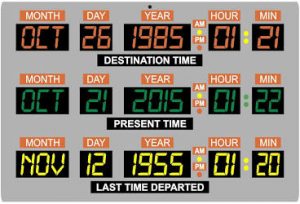July 2021 – Budget review for an upper middle class Amercan family.
Income.
My job usually processes raises the second week of July each year. This is the fifth year in a row that my pay has remained stagnant (last raise in 2016). While it’s dissapointing, I probably cannot complain too much about my base compensation as it is good money and includes all health insurance premiums for my family. Further, I’m at the point in my career that growth will come primarily (only) from my own rainmaking, which has been illusive.
Although I did not get a raise at my day job, I started a new side job that actually includes a nice supplementary salary. I did not take this side job for the money but the money is a nice bonus as the position will require some time and mental capacity. This opportunity should help me build relationships and grow my book of business at my day job.
My spouse continued to recieve her monthly part time salary. For some reason no federal taxes are withheld from her paycheck. This works out, however, as I withhold the maximum from my paycheck. She also pays almost 10% of her pay to a retirement program while her employer pays over 15%. So, over 25% of her compensation is forcefully directed to the employer’s retirement program. I’m in the camp that would love to self-direct this amount to a 401k or roth program in lieu of the state’s underfunded defined benefit plan.
Expenses.
This month, we had the joy of taking the entire family to our child’s sports tournament. While the team struggled, it was a good time for the families involved. Unfortunately, the trip was simply expensive. The tournament was located in a major tourist area and hotel rooms were minimum $300-400/night. The trip cost us at least $1200 between the $700 for a small hotel room at a basic hotel for only 2 nights and various food and gas purchases. Further, the trip has solidified our intent to purchase a minivan soon, which is necessary but probably not something we’d feel pressure about absent this trip.
Immediately following this trip was another stop at a conference related to my new part time job. Some of these expenses were paid, but we spent additional money on food that we probably would not have done. Not complaining but rationalizing our high expenses.
Restaurants and Groceries.
We spent $1720 on groceries/houshold and $600 on restuarants. Wow! This is probably a record or close to it. The grocieries/household spending includes two orders at HelloFresh, which cost $136.56 for 4 meals (for 4 servings). We recently started using HelloFresh, and I believe it saves money by reducing grocery spending overall. However, this may not be true, as we clearly continued our normal grocery spending. Some of the Grocery spending was also our attempt to get some healthier food during our long trip. We stopped at a walmart hoping to grab a rotisserie chicken and a few small sides. Well, I ran in and left my family in the car and was in such a hurry (I fear my spouse) that I ended up spending almost $50 for a few salads, sides, fruit, and chicken tenders. They were out of rotisserie chicken, of course.
Similarly, spending over $600 on restuarants is very odd. We usually budget about $300-$350 and sometimes we get up to $450 if we have a nice dinner out for a special occasion. There was a night out here but it was only $70. Turns out that we have 25 different charges for restauarants. This is absolutely due to our long trip, but still a bit of a shocker. Any way, I hopeful that our high spending this month was an anomally. So far, August spending has been much more normal.
Other Spending.
- Clothes. We spent almost $400 on clothes in July. Some of which is necessary for school and others are simply wants. Specificallly, we spent $100 on t-shirts to celebrate a major accomplishment for our favorite sports team.
- Miscellaneous. Miscellaneous is basically the same as “stuff I forgot to budget for” and cost us $565 in July. However, several of these costs were simply necessary, including a new tailgating tent for $85 (I hate the hot Sun), renewed Amazon Prime subscription at $125 (I’ve tried to cancel but my spouse thinks it’s worth it), more sports memorabilia purchases for $90 (Hailstate), new flags for the front of our house ($120), and a football related equipment purchase (the things we do for our kids).
- Entertainment. We spent $647 on entertainment, which is almost entirely a recategorization of the $700 in cash I withdrew intending to buy a rowing machine. I used about $140 of this cash to pay for a oil change and related service work to our care while on our trip. Turns out, it’s really helpful to have lots of cash on trips but it’s very hard to keep up with how it leaves your pocket.
- Medical. Only spent $229 on medical in July, thankfully. However, $150 of this is on a small bottle of ear drops. This might be the most expensive liquid on the face of the Earth – a small 100-200 ml bottle costs $150.
- Kids Activities spending was way up at $267. $155 of this was simply to pay football and the rest is for baseball hitting lessons and a monthly membership to the baseball hitting facility. It’s a lot of fun and probably worth it, but I hope this kid knows how good he’s got it.
- Yard maintanence. We spent $90 on pinestraw for the flower beds on the front of our house. We also paid a neighbor friend to mow the grass a few times but this money likely came out of my spouses Venmo, which is off our YNAB budget.
Monthly Standard Expenses.
- Mortgage. $2000 for our mortgage, which I see is going to increase to $2070 in September due to higher taxes and insurance (thanks Biden…joking).
-
Private School. Every year we debate our choice to send our kids to a local private school , and every year we decide to stick it out another year. In the grand scheme of private schools, we have a pretty good deal – our school is not that expensive at about ($5k-$7.5k). However, it’s super expensive compared to our successful public schools (that cost nothing). This month we had the joy of adding another child to our monthly private school tuition payment of approximately $1700. Luckily, this additional expense is more of a shuffiling since it generaly offsets the childcare payments we would be paying otherwise.
-
We spent $120 on two months of cell phone service. We transferred from Visible, a prepaid plan that runs only $25/line for unlimited to US Mobile, which costs $30/line. So far, US Mobile has provided better service. This should be lower in August since we paid for both July and August – in July. Unless we switch carriers, then it we will pay for most of September in August.
- We spent $180 on car insurance (I love insurance and get the highest limits possible).
- We also paid $126 for our first monthly dues and a few charges for food at a local country club pool membership. This is honestly reasonable for the nice pool, and I am happy to provide my spouse a kids a pool option during the long, hot summer.
- We spent $691 in our “vacation” category, which is exclusively our charges for two nights at a Courtyard type hotel.
Rental House.
Our rental house continues to chug along. Our tenants pay as agreed and keep the house up fairly well. We renewed our insurance and flood insurance for approximately $1700 in July – leaving $2740 in our rental account retained earnings.
We actually renewed our tenants for two years at the same rate. We’re probably leaving some rent on the table, but I value high quality tenants over a few extra rent dollars. We also considered moving the property to an LLC, but I’m not sure it’s worth the extra hassel and, so far, it’s been difficult to find a property insurance policy for an LLC owned property with a premium comparable to our existing policy. My strategy has been to simply insure the additional risk of holding the properyt in my personal name with umbrella coverage.
Giving.
We gave $1209 to various charities and our church in July 2021. We have bugeted another $1000, but frankly cash was fairly tight toward the end of the month and nothing seemed to really pull at us. We’ll leave the money budgeted for now and see what happens.
Goals.
I’d love to save a substantial amount monthly such that I can retire around age 50. I don’t mean lay around and eat all day, but I want to avoid the requirement of an 8-5 job. I want the freedom to work on various projects that may/may not pay off and the freedom to travel/work from anywhere. In short, this is not a true retirement but more of a “work my way”. I could possibly quit my current job but it would be very tight. Clearly, our standard of living has increased over the last several years (kids are fund but expensive).
Yet, as noted above, we need to acquire a larger family vehicle. We have our eyes on the Honda Odyssey and Toyota Sienna. I think we like the Odyssey a bit more and have started a “car replacement” savings fund. I budgeted my entire side income take-home pay of approximately $1400 to this category and will continue to do so. New Odyssey Elites (top-of-the-line model) have an MSRP of about $48k but could be bought for about $43k. I’m hoping to save about $25k and trade in our current vehicle for $18k. We can come up with another few thousand, if necessary. Ideally, we’d save about $2500/month and be ready to pull the trigger in about 10 months.
In short, there is always something that requires priority over simply saving for early retirement. Nonetheless, we are very blessed and look forward to continuing the current trends while analyzing spending and growing income.




